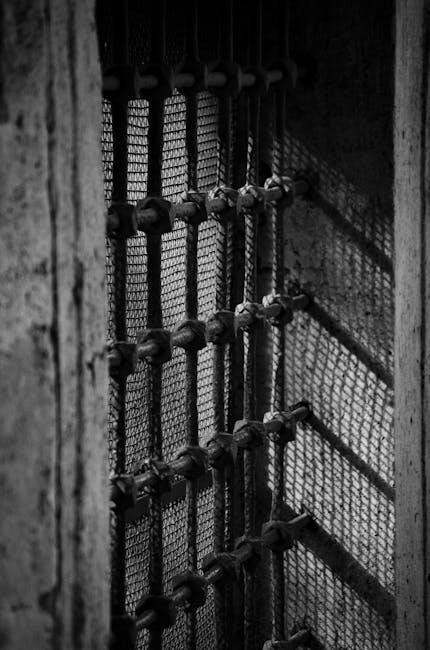The Drama Triangle, developed by Stephen Karpman in 1968, is a psychological model illustrating three roles: Victim, Rescuer, and Persecutor. It explains how individuals engage in dysfunctional patterns, hindering personal growth. Understanding this concept is key to breaking free from these damaging cycles.
Overview of the Drama Triangle
The Drama Triangle is a psychological concept developed by Stephen Karpman in 1968 to describe three distinct roles people often assume in interpersonal conflicts: Victim, Rescuer, and Persecutor. These roles are not fixed but can shift as individuals navigate relationships. The Victim feels powerless and seeks sympathy, the Rescuer tries to solve problems for others to feel valued, and the Persecutor blames or criticizes to assert control. This dynamic creates a cycle of dependency and conflict.
The Drama Triangle is closely tied to transactional analysis, a theory that examines how people interact based on parental, adult, or child ego states. Karpman’s model highlights how these roles are often unconscious and rooted in childhood experiences. By understanding these patterns, individuals can identify when they are trapped in the triangle and take steps to break free.
The model serves as a tool for self-awareness and personal growth, helping individuals recognize how they contribute to dysfunctional interactions. It emphasizes the importance of taking responsibility for one’s actions and emotions, rather than adopting rigid roles. This awareness is the first step toward healthier communication and relationships.

Historical Background and Development
The Drama Triangle was first introduced by Stephen Karpman in 1968 as a psychological model to explain the repetitive, unhealthy patterns people often engage in during conflicts. Drawing inspiration from Eric Berne’s transactional analysis, Karpman aimed to simplify the understanding of these dynamics by identifying three distinct roles: Victim, Rescuer, and Persecutor.
Karpman’s work built on Berne’s concept of ego states—parent, adult, and child—by focusing on how these states manifest in interpersonal conflicts. The Drama Triangle was designed to help individuals recognize and break free from these limiting patterns. Over time, the model has been widely used in therapy, counseling, and personal development to promote self-awareness and healthier communication.
The development of the Drama Triangle was influenced by Karpman’s observations of recurring power struggles in relationships. He observed that people often unconsciously adopt one of the three roles to cope with stress or avoid responsibility. This insight has made the model a valuable tool for understanding and addressing dysfunctional interactions in both personal and professional settings.

The Victim in the Drama Triangle
The Victim is a central role in the Drama Triangle, often feeling powerless and seeking sympathy. They may avoid responsibility and rely on others to solve their problems, fostering dependency and reinforcing a cycle of helplessness.
Characteristics of the Victim Role
The Victim role in the Drama Triangle is characterized by a sense of powerlessness and helplessness. Individuals in this role often feel overwhelmed by circumstances and believe they are at the mercy of external forces. They may seek sympathy and validation from others, fostering a cycle of dependency; Victims frequently avoid taking responsibility for their actions or emotions, instead blaming others or situations for their plight. This mindset can lead to a lack of personal growth and reinforce feelings of inadequacy. Victims may also struggle with self-awareness, failing to recognize their own contributions to their challenges. Their focus on external solutions, such as relying on a Rescuer, perpetuates the Drama Triangle dynamic. Over time, this role can become deeply ingrained, making it difficult for individuals to break free and adopt healthier, more empowered behaviors. Understanding these traits is essential for addressing and escaping the Victim role in the Drama Triangle.
The Rescuer in the Drama Triangle
The Rescuer often assumes a heroic role, seeking to solve others’ problems and gain validation. They may feel guilty if they don’t help, enabling dependency and reinforcing the Victim’s powerlessness. This role is driven by a need to control or avoid feelings of helplessness.
Characteristics of the Rescuer Role
The Rescuer role in the Drama Triangle is often characterized by a need to help others, frequently motivated by a desire to feel valued or needed. Rescuers often enable dependency by solving problems for others, which inadvertently reinforces the Victim’s powerlessness. They may struggle with setting boundaries and can become overly responsible for others’ emotions or actions. This role is also driven by a fear of abandonment or rejection, leading the Rescuer to prioritize others’ needs over their own. Despite their good intentions, Rescuers can perpetuate the cycle of dysfunction by avoiding confrontation and maintaining the status quo. They often feel unappreciated or resentful when their efforts are not acknowledged, which can escalate the drama. The Rescuer’s behavior, while well-meaning, can prevent genuine growth and accountability in both themselves and others. Recognizing these patterns is crucial for breaking free from the Drama Triangle and fostering healthier relationships.
The Persecutor in the Drama Triangle
The Persecutor role involves blaming, criticizing, or controlling others, often to mask their own insecurities. This role reinforces the Victim’s feelings of powerlessness and escalates conflict, perpetuating the Drama Triangle’s cycle of dysfunction and unhappiness in relationships.
Characteristics of the Persecutor Role
The Persecutor role is characterized by blaming, criticizing, or controlling others to maintain a sense of power or superiority. They often lack empathy and may use anger or aggression to manipulate situations. This role reinforces feelings of inadequacy in the Victim and escalates conflict within the Drama Triangle.
Persecutors may appear confident or dominant but often struggle with self-esteem and insecurities. They thrive on being in control and may provoke arguments to assert their authority; Their actions can create a toxic environment, making it difficult for others to express their needs or feelings.
Despite their tough exterior, Persecutors may feel vulnerable and use their role to avoid dealing with their own emotional pain. By focusing on others’ flaws, they divert attention from their own shortcomings. This behavior perpetuates the cycle of dysfunction, as the Victim and Rescuer respond in ways that maintain the status quo.
Recognizing these traits is crucial for breaking free from the Drama Triangle. By acknowledging the patterns of blame and control, individuals can begin to address the underlying issues driving this behavior, fostering healthier communication and relationships.

Dynamics of the Drama Triangle
The Drama Triangle dynamics involve continuous role switching among Victim, Rescuer, and Persecutor. Each role reinforces the others, creating a cycle of dependency and conflict. Awareness of these interactions is crucial for breaking free and fostering healthier relationships.
Role Switching and Interactions
In the Drama Triangle, individuals often switch roles to maintain the cycle of dependency and conflict. For instance, a Victim may become a Persecutor when they feel threatened or powerless, while a Rescuer might shift to a Victim role if they feel unappreciated. These role transitions are subtle but powerful, reinforcing the dysfunctional dynamics. The Persecutor, initially appearing dominant, may also adopt a Victim mindset when confronted with their own vulnerabilities. This fluidity in roles keeps the triangle active, making it challenging to break free. Awareness of these interactions is essential to recognize how each role perpetuates the cycle. By understanding the patterns, individuals can begin to step out of the triangle and adopt healthier communication styles. Role switching often occurs unconsciously, driven by emotional needs and insecurities. Breaking this cycle requires self-awareness and a willingness to embrace accountability rather than relying on the familiar but damaging roles of Victim, Rescuer, or Persecutor.

Identifying the Drama Triangle
The Drama Triangle is identified by recognizing recurring patterns of Victim, Rescuer, and Persecutor roles in relationships. Key signs include emotional reactivity, power struggles, and a lack of accountability. Awareness of these dynamics is the first step toward breaking the cycle.
Recognizing Patterns in Relationships
Recognizing patterns in relationships is crucial to identifying the Drama Triangle. The Victim often feels powerless and seeks sympathy, while the Rescuer tries to fix others’ problems to feel needed. The Persecutor blames and criticizes, asserting control. These roles are not static; individuals may switch roles during conflicts.
Pay attention to recurring emotional reactions, such as feelings of helplessness, anger, or a need to control. These emotions often signal engagement in the Drama Triangle. Over time, these patterns can become ingrained, making it difficult to recognize when they are in play.
Another key sign is the absence of personal responsibility. Victims may avoid accountability, Rescuers might enable dependency, and Persecutors shift blame. These dynamics create a cycle of dysfunction, hindering healthy communication and growth in relationships.
By observing how these roles manifest in interactions, individuals can begin to identify when the Drama Triangle is active. Awareness of these patterns is the first step toward breaking free from their destructive influence and fostering more balanced, adult-to-adult relationships.
Impact of the Drama Triangle
The Drama Triangle fosters emotional distress, hindering personal growth and relationships. It perpetuates mental health issues like anxiety and low self-esteem, while eroding trust and intimacy. Breaking free is essential for achieving emotional well-being and fostering healthy connections.
Effects on Personal Well-Being
The Drama Triangle significantly impacts personal well-being by fostering emotional distress and mental health challenges. Individuals trapped in these roles often experience anxiety, low self-esteem, and a sense of powerlessness. Victims may feel helpless, Rescuers can become overwhelmed by others’ problems, and Persecutors may struggle with guilt or shame. These dynamics strain relationships, creating cycles of conflict and mistrust. Over time, this can lead to emotional exhaustion, burnout, and a diminished capacity for healthy communication. The constant need to fulfill these roles prevents individuals from addressing their own needs, hindering personal growth and self-awareness. Prolonged engagement in the Drama Triangle can also exacerbate feelings of resentment and frustration, further eroding emotional well-being. Recognizing these patterns is the first step toward breaking free and restoring balance to one’s mental and emotional health.

Strategies to Escape the Drama Triangle
To break free, focus on self-awareness, improve communication, and set healthy boundaries. Recognize your role, take responsibility for your emotions, and shift to adult-centered interactions. These steps empower personal growth and foster healthier relationships.
Cultivating Self-Awareness
Cultivating self-awareness is a cornerstone of escaping the Drama Triangle; It begins with recognizing your role—whether Victim, Rescuer, or Persecutor—and understanding how these roles perpetuate unhealthy dynamics. By introspectively examining your thoughts, emotions, and behaviors, you can identify patterns that keep you trapped in the cycle. Self-awareness involves taking responsibility for your actions and emotions, rather than blaming others or external circumstances. Practicing mindfulness and journaling can help you observe your reactions without judgment, fostering a deeper understanding of your motivations. Additionally, seeking feedback from trusted individuals can provide new perspectives on how you engage in relationships. Once you gain clarity on your role, you can consciously choose to step out of it, embracing a more balanced and authentic way of interacting. This awareness is the first step toward breaking free from the Drama Triangle and developing healthier communication patterns.
Improving Communication Skills
Improving communication skills is essential for escaping the Drama Triangle. Effective communication helps break the cycle of blame, rescue, and victimhood by fostering clarity and accountability. Active listening is a key component, as it allows individuals to understand others’ perspectives without judgment. By expressing emotions and needs clearly, using “I” statements instead of accusatory language, relationships become more authentic and less prone to conflict. Additionally, learning to articulate boundaries respectfully prevents the emergence of persecutory or rescuing behaviors. Practicing assertiveness ensures that interactions are balanced, with both parties feeling heard and valued. These skills disrupt the dysfunctional dynamics of the Drama Triangle, promoting healthier interactions. By refining communication, individuals can move beyond role-playing and foster genuine connections, ultimately escaping the cycle of drama and conflict.
Setting Healthy Boundaries
Setting healthy boundaries is a crucial step in escaping the Drama Triangle. Boundaries help individuals define their limits and protect their emotional and mental well-being. By establishing clear boundaries, people can avoid falling into the roles of Victim, Rescuer, or Persecutor. Healthy boundaries promote mutual respect and prevent the manipulation or dependency that often accompanies these roles. Learning to say “no” without guilt and asserting one’s needs clearly can disrupt the cycle of drama. Additionally, boundaries encourage accountability, as they prevent others from shifting responsibility or blaming external circumstances. When boundaries are respected, relationships become more balanced, and individuals are less likely to engage in dysfunctional patterns. Setting boundaries also fosters self-respect and empowerment, allowing individuals to take control of their lives rather than relying on others for validation or solutions. By prioritizing boundaries, one can create a foundation for healthier interactions and move beyond the limiting dynamics of the Drama Triangle.
